Growing Amla tree requires a well-drained, light-heavy soil that is deep and rich in organic matter. The pH level can be slightly between acidic and alkaline. Water-filled and clay-rich soil is harmful and must be avoided; the same is true of too much sandy soil. The tree has adapted well to dry areas and can also be grown in moderate alkaline soil. Let’s check out the best fertilizer for Indian Gooseberry/Amla.
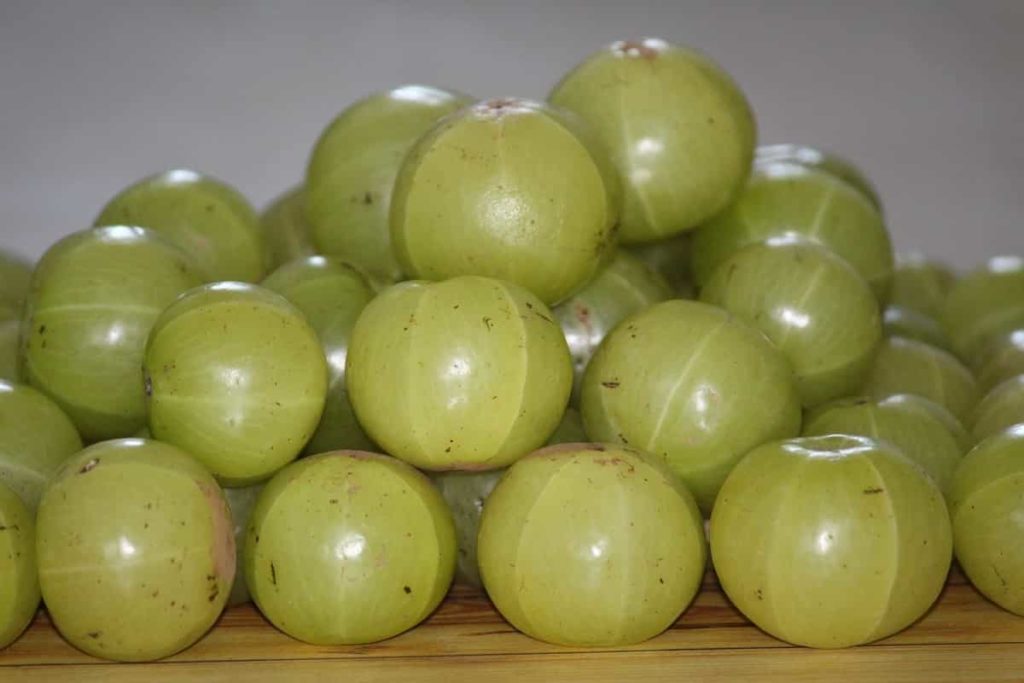
Manures and fertilizers depend on soil fertility, plant age, and production. Organic fertilizers are preferred. Farmyard manure or nitrogen fertilizers applied in adequate quantities result in better growth and higher production. Feed the plant with organic manure once a month during the growing season for better result. Loosen the soil above without disturbing the plant’s roots so that it can quickly get nutrients and moisture.
On nutritious soil, your Amla tree can get for a few years without fertilization, but at some point, natural supplies will run out, and the quality of shoot growth, production, and fruits will continue to decline. To make your Amla flourish, you must ensure that it is provided with enough nutrients. So, you should choose a suitable location for your bush before planting. Amla is relatively undemanding. However, they thrive best on medium-heavy, well-drained soil with a higher proportion of humus. You can improve poor soil by including organic materials like garden compost or rotten manure.
Best fertilizer for Indian Gooseberry/Amla
Homemade fertilizers for Amla
- Neem cake – Apply neem cake; once the Amla plants are established, you must fertilize them. Fertilizers like neem cake, mixed oil cake, etc., can be used. Prepare the soil, clean the weeds and apply a mixture of neem oil cake around the Amala tree. Neem cake increases growth and strengthens roots.
- Wood ash – If you sprinkle wood ash under the Amla, you can also get the same effect as with the leaves of the Comfrey. Ash is also extremely rich in potassium and contains precious trace elements and limes.
In case you missed it: Summer Watering Guide: For Vegetables, Flowers, and Herbs
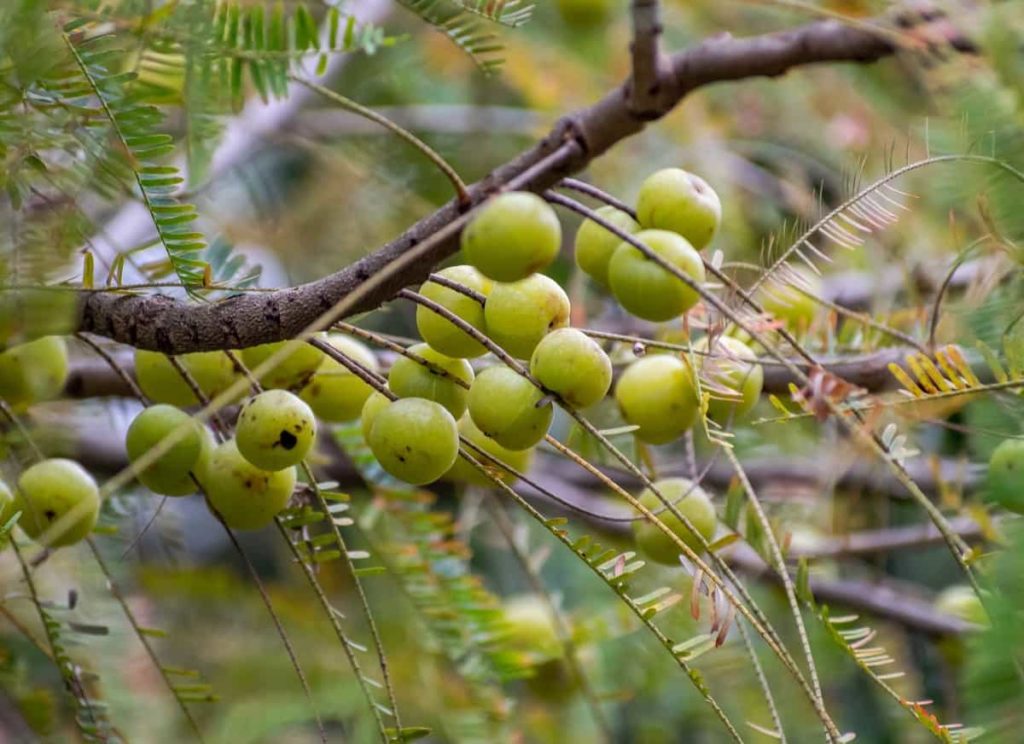
Compost manure for Amla
Fertilizer is essential for every plant and Amla plants for the need for a cocopeat or cow dung. You must give water after fertilization. Well-rotten manure is also good for amla, it will the nutrients to the soil. If you want to do somewhat good for your Amla other than annual essential fertilization, diluted nettle manure is recommended. It promotes nitrogen conversion in the soil and attracts beneficial soil organisms, which helps transform organic materials and loosen the soil.
Liquid fertilizers for Amla
You can also make liquid fertilizer from the comfrey leaves and water the plant during the annual fertilization with compost. You should dilute the fertilizer from water in the ratio of 1:10 before watering so that the plant is not burnt.
Natural fertilizer for Amla
- During summer, you should mix the soil around the Amla tree with paddy straw, wheat straw, or dry leaves of any tree placed on the tree’s base from the trunk to 15 to 20 centimeters. Small size and height crops such as green gram, black gram, cowpeas, horse gram, or other medicinal, aromatic, or floriculture crops can be grown.
- The soil around the Amla plant is advised to be covered with a layer of mulch pattern made of grass clippings. The permanent dissolution of organic material provides additional nutrients to your Amla. In addition, the mulch’s surface holds moisture in the soil and suppresses the growth of weeds, which takes away the Amla of nutrients.
In case you missed it: Growing Amla At Home – A Full Guide
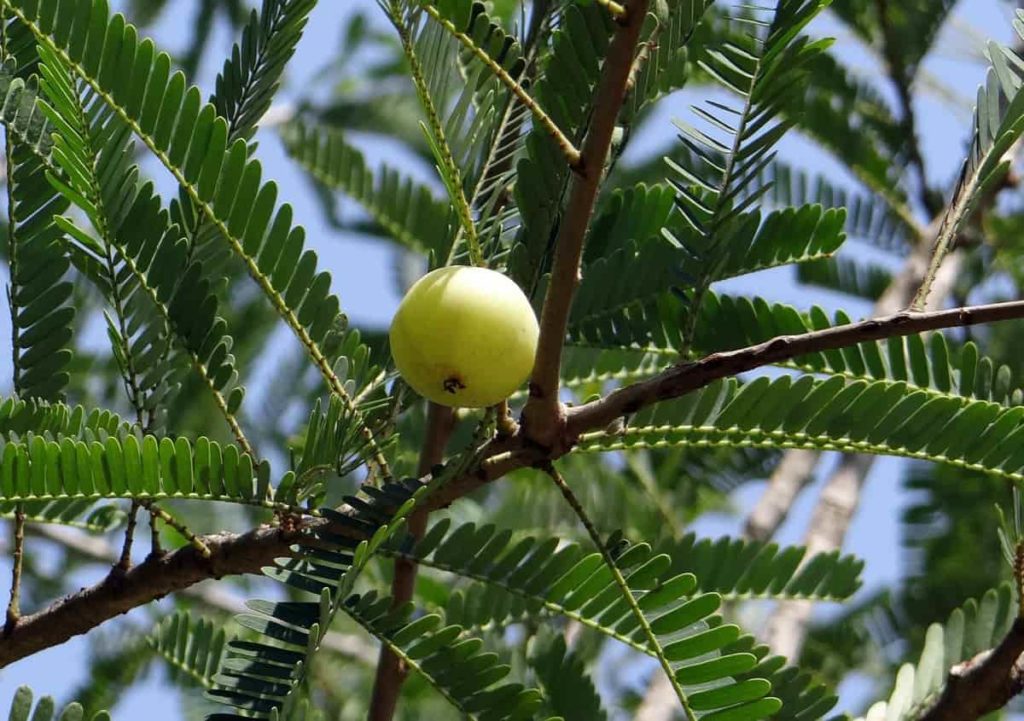
Organic fertilizers for Amla
Bone meal – At the planting time, each pit is filled with 3 to 4 baskets of well-rotten farmyard manure and 1 kg of neem cake or 500 grams of bone meal mixed with soil.
Commercial fertilizers for Amla
NPK ratio
Apply 10 kg farmyard manure at the soil preparation and mix well with the soil. Apply NPK fertilizer in nitrogen 100 grams, phosphorus 50 grams, and potassium 100 grams per plant. In sodic soil, boron and zinc sulfate 100 to 500 grams are given according to the tree’s age. If there is a lack of boron, 0.6% borax is sprayed on plants to avoid fruit necrosis. Amla plants are sprayed with zinc, copper, and calcium nitrate to improve plant growth and proper fruit growth.
Amla fertilizer schedule
Choose a planting site with deep, rich, well-drained loam and full sun exposure. Although Amla is the best performer in deep and rich soil, it grows in almost any land that is not highly alkaline. Dig holes 30 feet away, and mix a few shovels of manure in the soil of each hole. Plant the seedlings in the holes deep into the same soil as in their pots. Place manure over the soil around the seedlings, keeping it several inches from their trunks.
In case you missed it: Top 10 Fruits to Grow on the Terrace

Fertilizer dose is given to a year-old plant and is continuously increased for ten years. In January-February, a full dose of phosphorus and half of potassium and nitrogen are given as basal doses. The remaining half of the dose is given in August. Nitrogen is applied every year from September-October for 30 grams per tree for ten years. You should give young plants 15 to 20 kg of well rotten manure and mature trees with one kg of super-phosphate 1 to 1.5 kg of Muriate of potash.
You should give the above fertilizers in two distribution doses for maturing once during September-October and April-May. Plants need to be irrigated after the application of fertilizer after fruit arrangement. Double the amount of fertilizer in the second year and gradually increase it so that each tree gets about 1.3 kg of fertilizer per application at the age of 10. After the trees produce fruit, schedule the feeding so that one feeding is after the flower falls and the other feeding is four months later.
Fertilizer can be applied for the first decade of the plant if desired. Use about 30 grams of nitrogen for each year of plant age and spread half of this fertilizer after setting the fruit (or in spring, if the plant is not producing fruit yet) and the rest about four months later. The fertilizer requirement for a plant 10 to 12 years old is estimated at 0.5 to 1.5 kg nitrogen, 0.25 to 1 kg phosphorus, and 0.375 to 0.8 kg potassium. These plants also require 50 kg of farmyard manure and 5 kg of press mud every year. The fertilizers are applied to plants in two half doses: one before flowering and the other after fruit set.
How to fertilize Amla in pots
Select a container at least 10 inches deep and wide to grow your Amla plant as it requires more space as it grows. Ensure to provide enough space for the plant’s roots to grow well. Choose a place where the plant gets enough sunlight but low winds. When growing a plant, you can go with natural fertilizers such as aged cow manure and get organic production of Amla for yourself. Provide manure with 14 to 28 grams of nitrogen every year of tree age. If you prepare it yourself at home, you should use organic fertilizer.
In case you missed it: Organic Coco Peat Compost Preparation for Plants
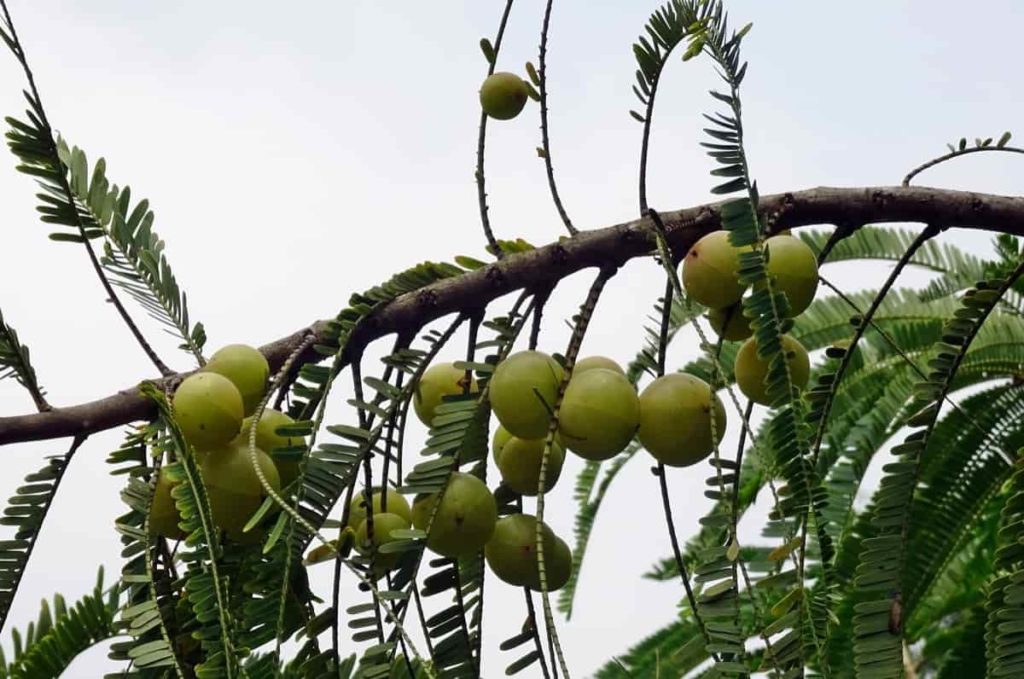
Frequently asked questions about fertilizers for Amla (FAQ)
How long does it take to give fruit to the Amla plant?
Amla tree starts to bear fruit after two years of plantation. Fruits are cut during February when they turn from light green to dim green-yellow.
Why is my Amla tree not fruiting?
Firstly, many trees do not flower during spring but also during winter. Flowers wither after a few months. They go without carrying fruit. Secondly, even if some trees manage to swell during spring, they fail to bear fruit.
How fast does Amla grow?
After planting, production starts in about 7 to 8 years. Harvesting is done in February. The strong jerks of the tree do the harvesting. When the fruits are completely matured, they turn into dim green-yellow.
Which plant of Amla is the best?
Common varieties of Amla are Banarasi, NA 7, Krishna, Kanchan, Chakaiya, and BSR1.
What is the height of the Amla tree?
It is a small to medium-sized tree, 8 to 18 meters. In height with crooked stem and expanding branches.
In case you missed it: Kitchen Garden Advantages and Disadvantages
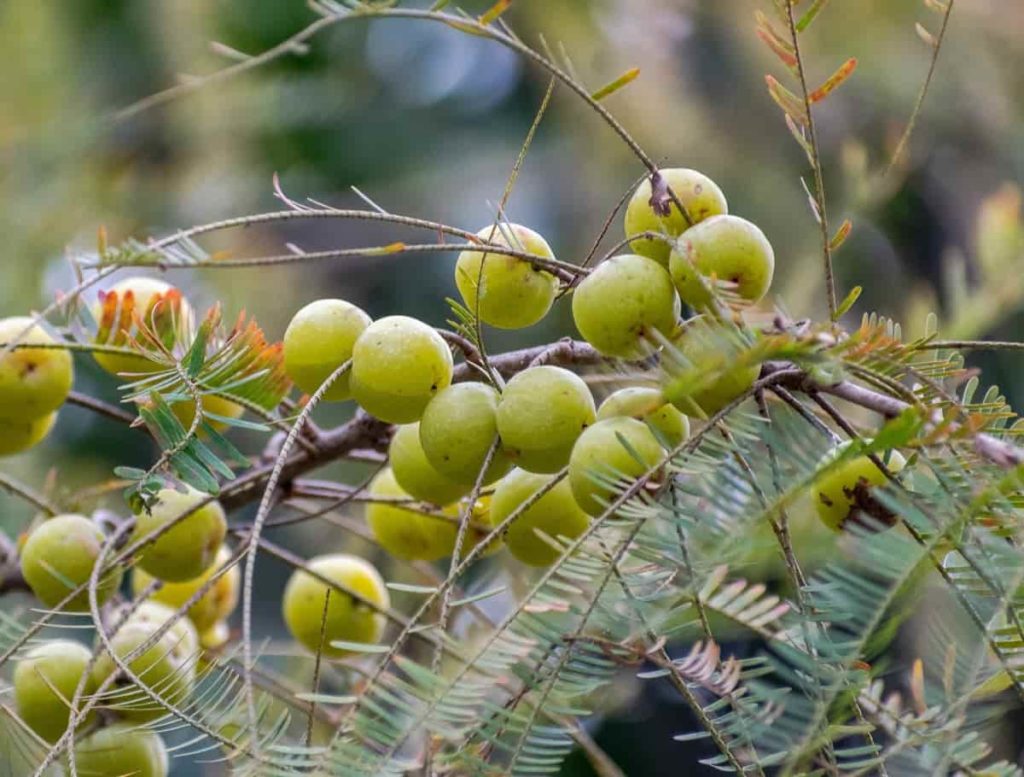
Can Amla grow in clay soil?
Although Amla trees grow rapidly in well-drained loamy soil, they can grow in heavy soil provided minor drainage is arranged during heavy rains in the first 2 to 3-year of the early crop growth.
Does the Amla plant need sunlight?
Amla plants need plenty of sunlight to grow well.
Why does Amla become brown?
Within 2 to 3 days of infection, smoke brown to black round lesions develops on fruits. Diseased parts later show olive-brown discoloration, with water-soaked areas spreading to both ends of the fruit that form an eye-shaped appearance.
- How to Grow Hibiscus from Flower
- Plantation Ideas for Home Decoration: A Beginners Guide
- Flower Garden Designs and Layouts for Beginners
- Planting and Spacing Techniques in Papaya: A Beginner’s Guide
- Growing Gold: Essential Techniques for Planting Pineapples
- How to Make Kalanchoe Plant Bushy: Home Remedies and Solutions
- 11 Reasons Why Your Gardenia is Not Blooming: Home Remedies and Solutions
- Eco Elegance: The Guide to Designing a Drought-Tolerant Landscape
- Gardening on a Slope: Strategies for Hillside Landscaping
- Nourish and Flourish: Top Organic Mulches for Thriving House Plants
- Everything You Want to Know about Indian Mogra Flower: Discover Uses and Growing
- Green Thumb Success: Expert Tips for Cultivating Greenhouse Pumpkins All Year Round
- Maximize Growth & Flavor: The Ultimate Guide to Companion Planting in Herb Gardens
- How to Control Rhododendron Problems Naturally: Home Remedies and Organic Ways to Fix Them
- Natural Magic: The Remarkable Benefits of Cinnamon for Plants
- Best Steps to Revive Dying Tulip with Natural and Organic Treatment
- 10 Reasons Why Your Angel Trumpet is Not Blooming: Remedies and Treatment
- How to Fix Periwinkle Leaf and Flower-Related Problems: Natural Remedies and Solutions
- How to Fix Zinnias Leaf and Flower Problems: Discover Natural and Home Remedies
- Organic Steps to Induce Lemon Tree Flowers: A Comprehensive Guide
- Bloom Booster: Crafting the Perfect Homemade Bougainvillea Fertilizer
- Optimizing Growth: A Guide to Applying NPK Fertilizer for Potted Plants
- 10 Best Homemade Fertilizers for Rubber Plant: DIY Recipes and Application Method
- How to Boost Female Pumpkin Flowers: Effective Steps for More Flowers and High Yields
- Transform Your Indoor Garden: Top Benefits of Pink Salt for Houseplants
- 10 Best Homemade Fertilizers for Peacock Plants (Calathea): Easy DIY Guide
- Unlock Blooms: 9 Reasons Why Your Potted Chrysanthemum is Not Blooming
- 8 Reasons Why Your Potted Hibiscus is Not Blooming: Fix it with Simple Solutions
- Unlock Blooms: 9 Key Reasons Your Potted Frangipani Won’t Flower
- 10 Reasons Why Is My Ice Plant Not Blooming: Remedies and Treatment
- 10 Reasons Why My Potted Hydrangea Not Blooming: Treatment and Remedies
- 10 Reasons Why is My Wisteria Not Blooming: Remedies and Treatment
- 10 Reasons Why is My Goldfish Plant Not Blooming: Remedies and Treatment
- Maximize Your Space: Ultimate Guide to Balcony Gardening with Grow Bags
- 10 Reasons Why Your Iris is Not Blooming: Remedies and Treatment
- 10 Reasons Why Your Anthurium Plant is Not Blooming: Treatment and Remedies